Abstract
As part of an investigation devoted to the development of new antiviral agents a compound of established antiviral activity has been subjected to systematic structural modification. The structure-activity data so obtained have been used in the design of new compounds, some of which are described. The compound chosen was isatin β-thiosemicarbazone, which has high activity against neurovaccinia infection in mice, and a 4-point parallel-line assay of in vivo chemotherapeutic activity has been developed, which has enabled the activity of the derivatives to be determined against isatin β-thiosemicarbazone as a standard. The overall dimensions of the isatin β-thiosemicarbazone molecule appear to be nearly maximal for the retention of high activity, as all substituents in the aromatic ring decrease the activity irrespective of their nature or position. The projection of the -CS.NH2 group in relation to the ring nitrogen was found to be critical, as the α-thiosemicarbazone was inactive. A number of modifications of the side-chain were investigated:all led to reduction or loss of antiviral activity. The antiviral activity showed a positive correlation with chloroform solubility over a considerable range. The most active compound encountered was 1-ethylisatin β-thiosemicarbazone, with an activity of 286 (isatin β-thiosemicarbazone≡100). Isatin β-thiosemicarbazone showed no activity against 15 other viruses, and 20 related compounds showed on activity against ectromelia.
Full text
PDF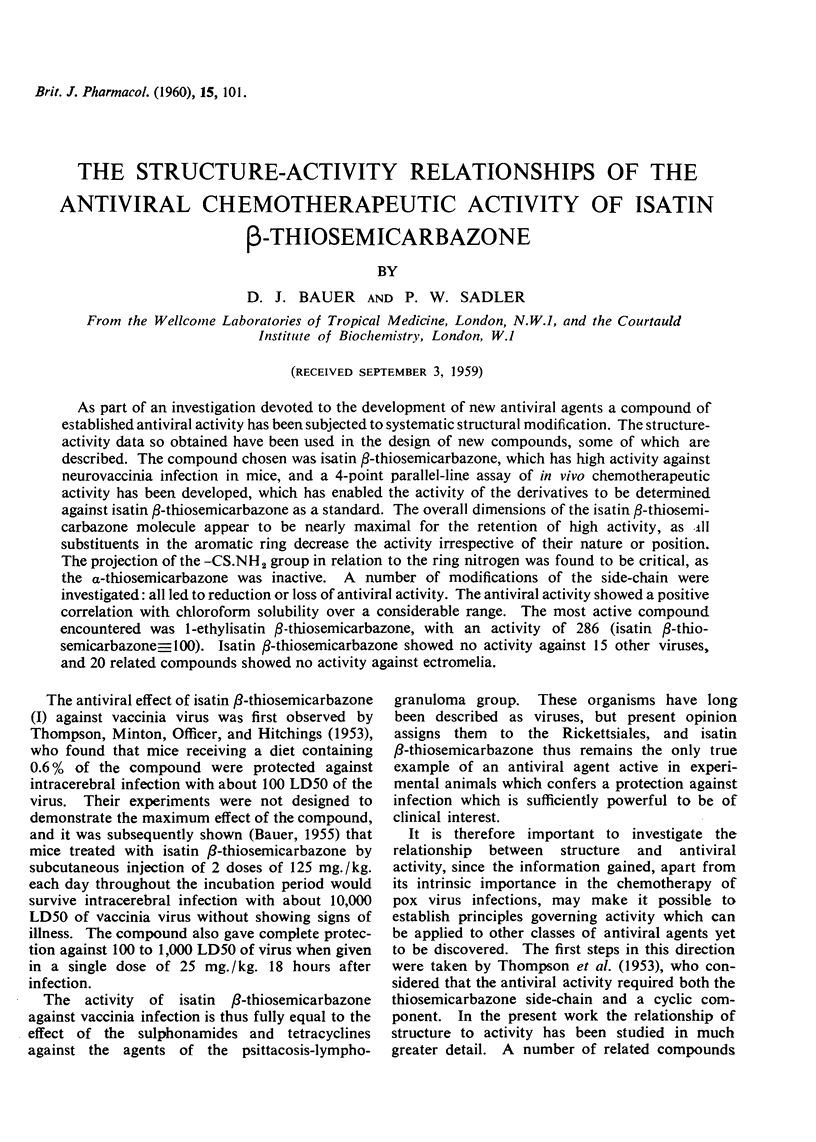
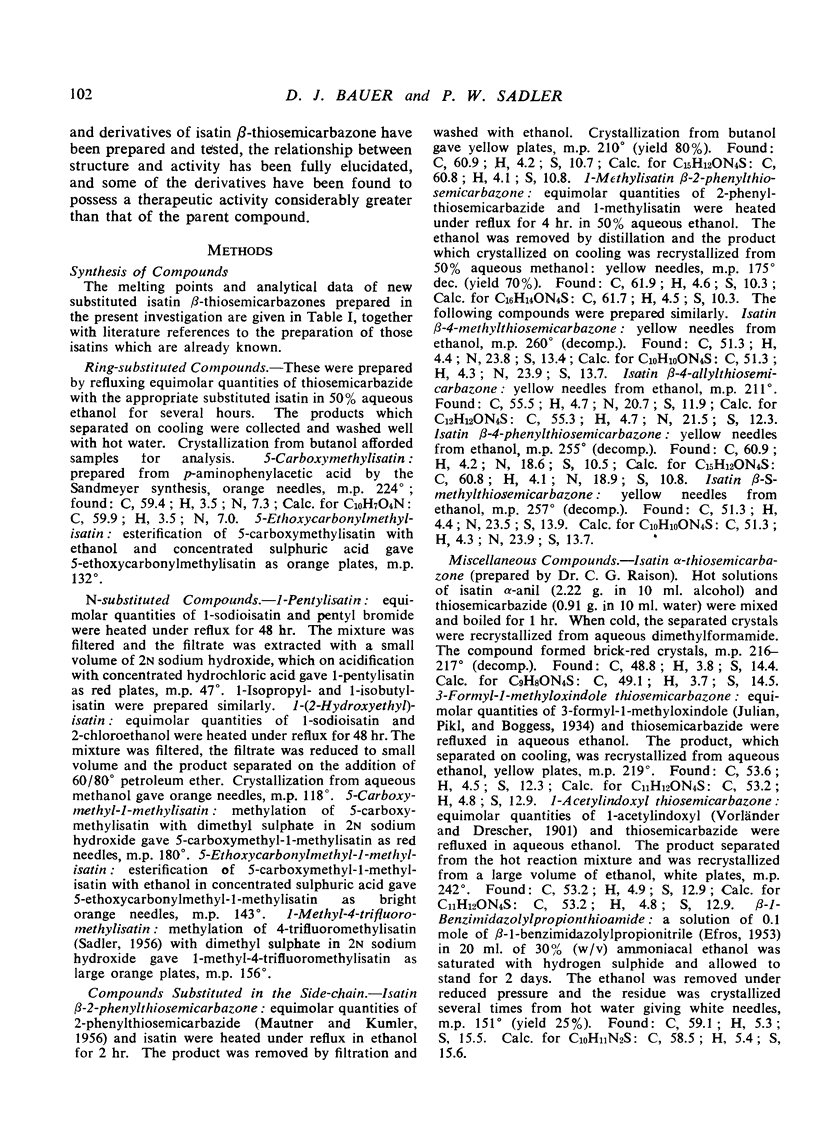
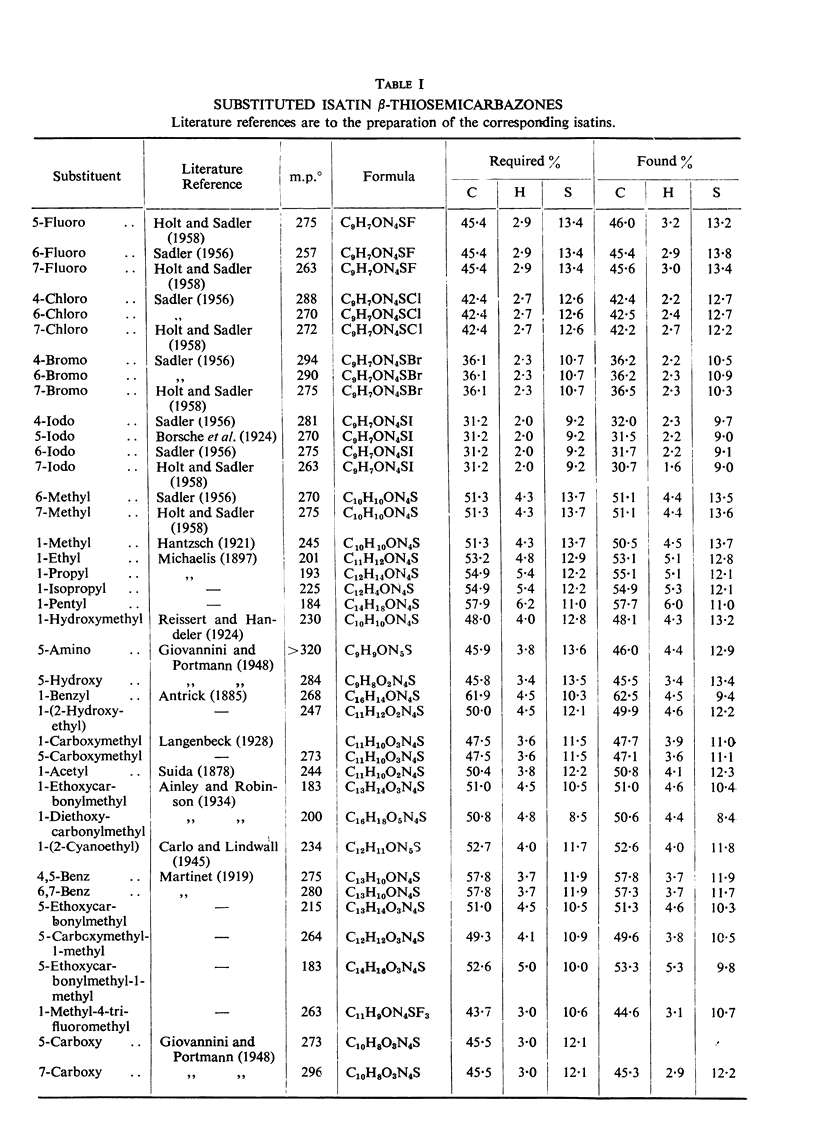


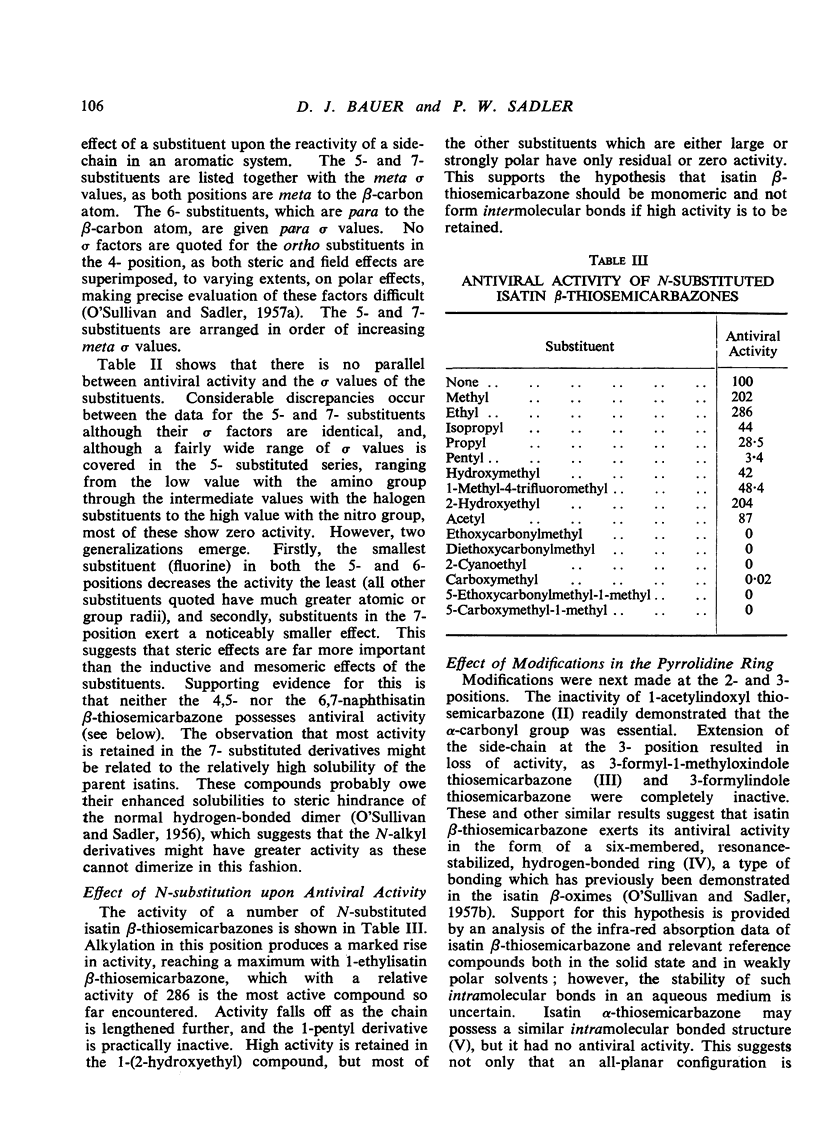
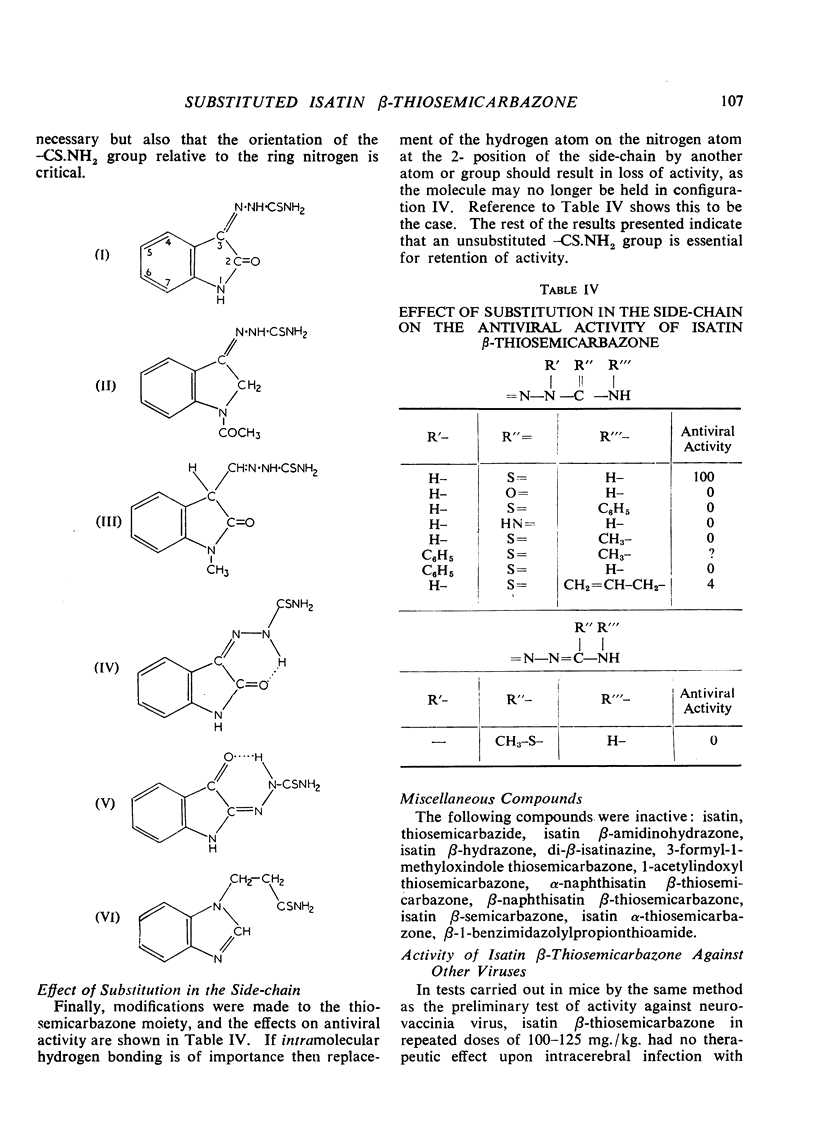
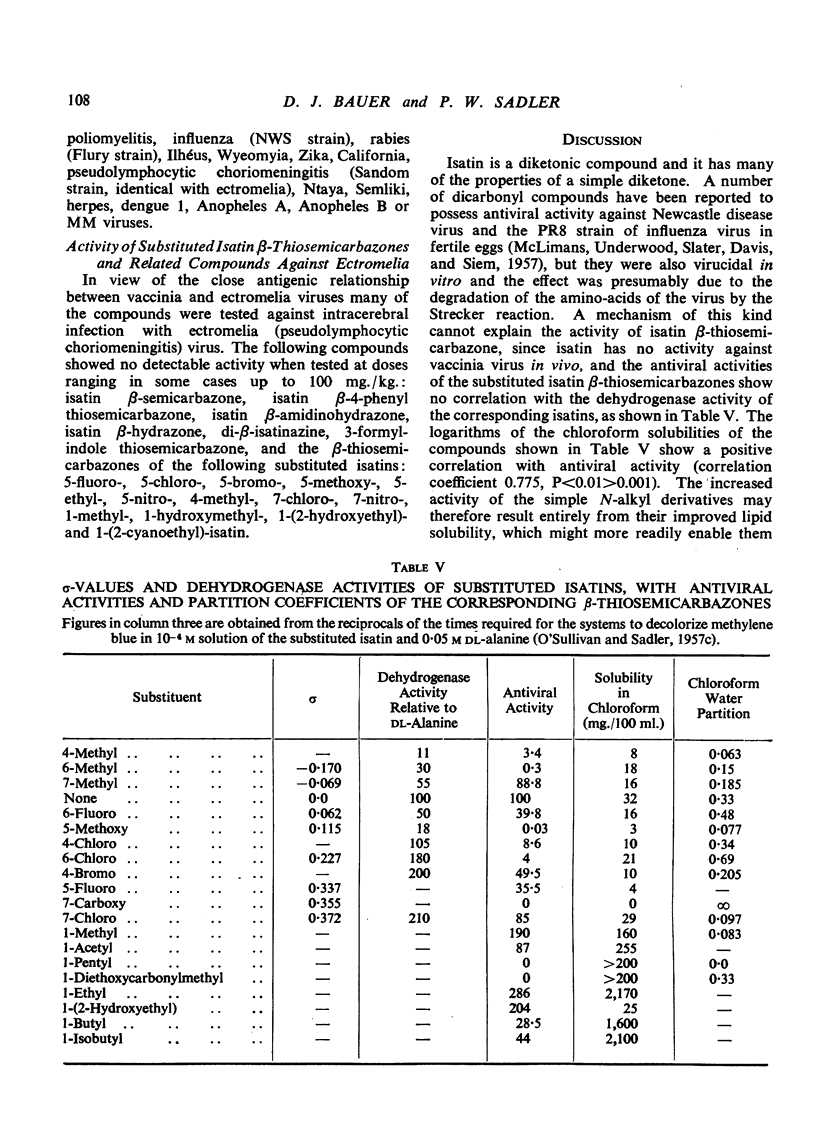
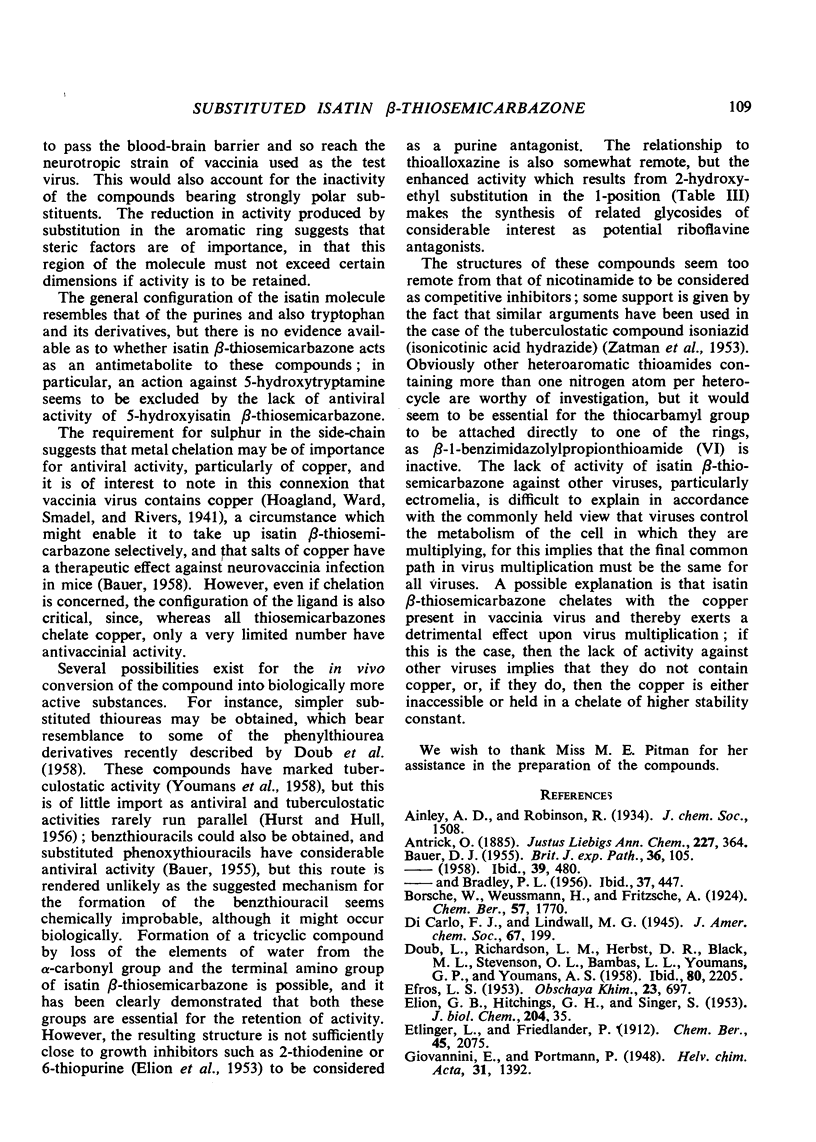
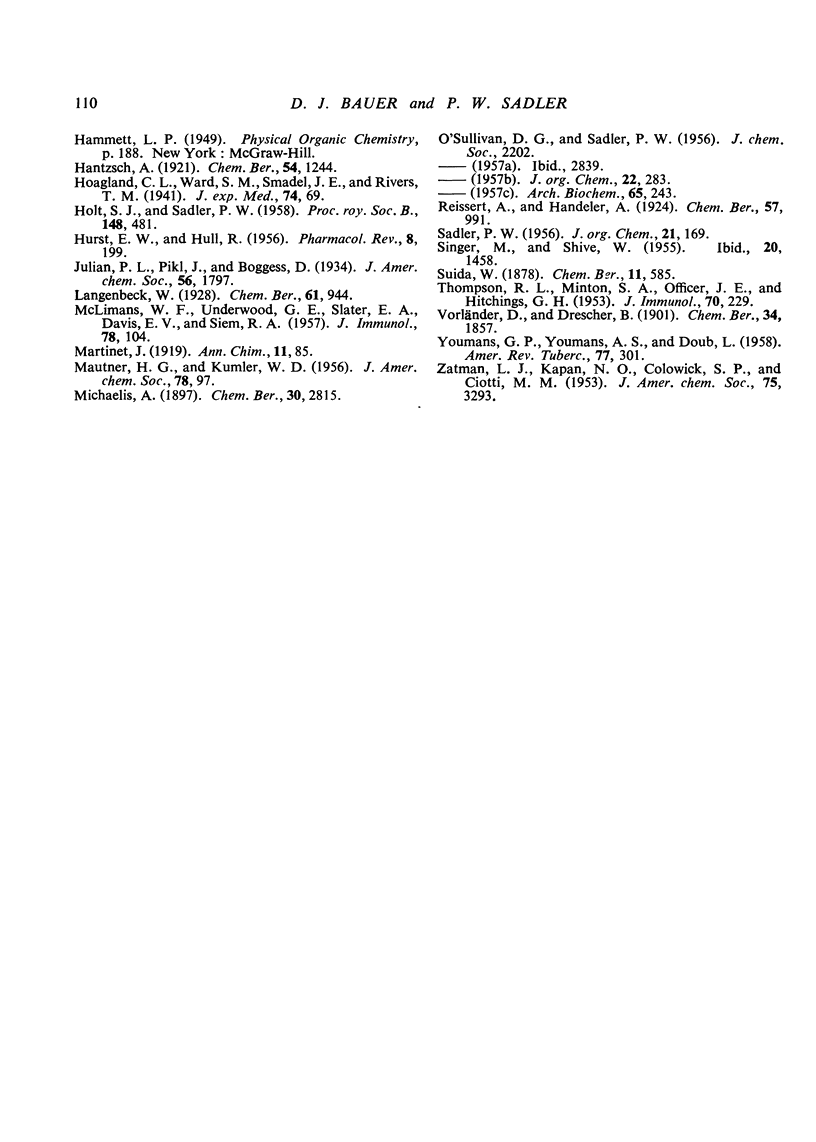
Selected References
These references are in PubMed. This may not be the complete list of references from this article.
- BAUER D. J. The antiviral and synergic actions of isatin thiosemicarbazone and certain phenoxypyrimidines in vaccinia infection in mice. Br J Exp Pathol. 1955 Feb;36(1):105–114. [PMC free article] [PubMed] [Google Scholar]
- ELION G. B., SINGER S., HITCHINGS G. H. The purine metabolism of a 6-mercaptopurine-resistant Lactobacillus casei. J Biol Chem. 1953 Sep;204(1):35–41. [PubMed] [Google Scholar]
- HOLT S. J., SADLER P. W. Studies in enzyme cytochemistry. II. Synthesis of indigogenic substrates for esterases. Proc R Soc Lond B Biol Sci. 1958 Apr 8;148(933):481–494. doi: 10.1098/rspb.1958.0040. [DOI] [PubMed] [Google Scholar]
- HURST E. W., HULL R. The chemotherapy of virus diseases, with brief consideration of the influence of dietary, hormonal and other factors in virus infections. Pharmacol Rev. 1956 Jun;8(2):199–263. [PubMed] [Google Scholar]
- MCLIMANS W. F., UNDERWOOD G. E., SLATER E. A., DAVIS E. V., SIEM R. A. Antiviral activity of dicarbonyls and related compounds in embryonated eggs. J Immunol. 1957 Feb;78(2):104–111. [PubMed] [Google Scholar]
- THOMPSON R. L., MINTON S. A., Jr, OFFICER J. E., HITCHINGS G. H. Effect of heterocyclic and other thiosemicarbazones on vaccinia infection in the mouse. J Immunol. 1953 Mar;70(3):229–234. [PubMed] [Google Scholar]
- YOUMANS G. P., YOUMANS A. S., DOUB L. The effect of thiocarbanidin and related compounds on Mycobacterium tuberculosis var. hominis in vitro and in vivo. Am Rev Tuberc. 1958 Feb;77(2):301–310. doi: 10.1164/artpd.1958.77.2.301. [DOI] [PubMed] [Google Scholar]


